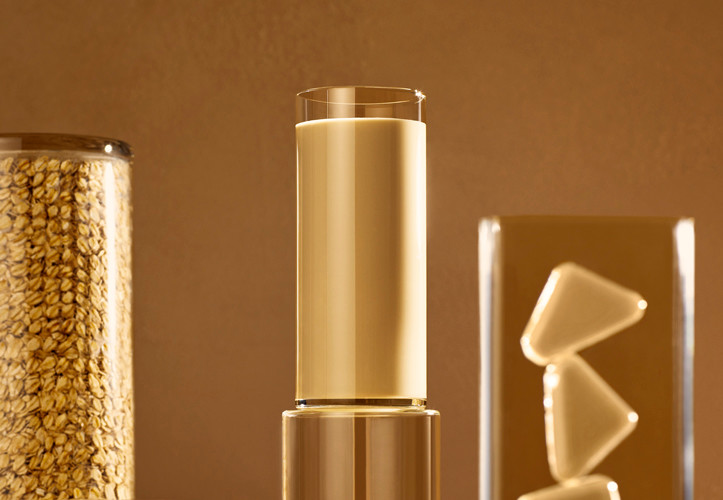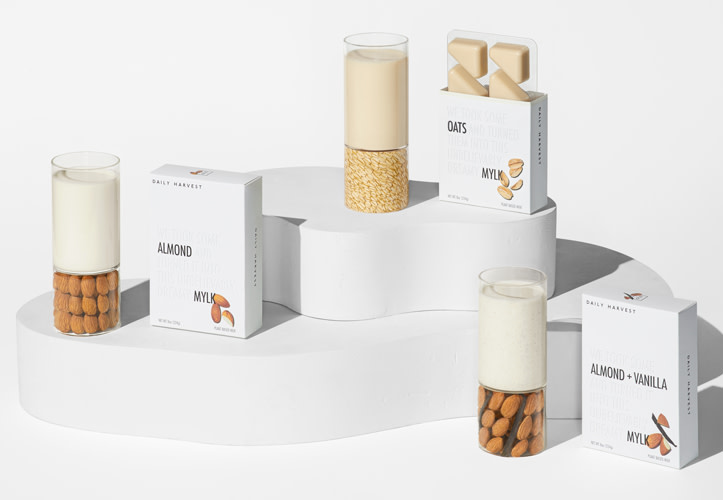
The Ultimate Guide to All Things Oats
- By Daily Harvest
- Updated: January 2025

From rolled to steel cut, overnight oats to oatmeal, we’re explaining everything you need to know about this versatile whole grain in our ultimate guide to all things oats.
If you can picture a field of wheat, you can picture a field of oats. Like wheat, oats are a cereal crop, which are grasses specifically grown for their edible grains. Oats grow on a tall, grassy stalk. Each stalk features thin leaves running up its length—that’s where the oats grow.
In the United States, oats are typically planted in the late winter or early spring and harvested in the fall. Oats are ready for harvest when the kernels are hard and dried. Harvesting involves removing the seed from the stalk so you’re left with oat grain.
After harvest, the oat grains are cleaned and processed. Processing means removing the inedible husk from the oat grain, leaving behind the oat groat, aka the hulled kernel. Oat groats (the most minimally processed form of an edible oat) are a naturally gluten-free whole grain that includes the germ, the bran and the endosperm. Groats are then used to make different forms of oats.
If you’ve ever wondered about the difference between rolled and steel cut oats, or what exactly oat bran is, this guide’s for you. Consider this the ultimate oat lover's dictionary.
Oat groats are hulled oat kernels, what you get after removing the inedible husk from the whole oat grain. They’re the most minimally processed form of edible oats and what’s used to make (mostly) all things oats. You can eat whole oat groats—they’re a great choice if you prefer a super chewy bowl of oats. A few caveats to groats: they really should be cooked and take a longer time than other forms.
Rolled oats are sometimes called old fashioned oats. They’re made by steaming and flattening oat groats with a roller—hence the name. This process means they have a shorter cooking time compared with groats, or you can skip cooking altogether. Overnight oats, anyone?
Quick cooking oats are rolled oats but rolled even thinner, so they cook in just a couple minutes. They make a good choice for all those “no-time-for-breakfast-but-want-to-eat-breakfast” people out there (you know who you are).
Steel cut oats are also called Irish oats. These are oat groats that have been chopped up instead of rolled. Their cooking time falls in the middle between oat groats and rolled oats. They’re a good choice for people who like a more textured oatmeal.
Scottish oats are made by slowly grinding oat groats, resulting in a coarse meal that can be used to make a traditional porridge with a smooth, velvety texture.
Oat bran is the outermost layer of oat groats. The bran is removed from the groat and finely ground. This is a good choice if you like a smooth texture to your hot cereal and can also be used to up the fiber ante in smoothies and baked goods.
Oat fiber is different from oat bran; it’s made by grinding and processing the otherwise inedible oat husk that’s removed from the oat grain after harvest. It’s generally used to boost fiber content in smoothies or baked goods.
Oat flour is also called oat powder; it’s finely ground groats. You can use oat flour in baking, as a thickener or as a breading.
Oat milk is a plant-based milk alternative made out of oats. It can be made a few different ways. Daily Harvest Oat Mylk is made by combining oat flour with water and a pinch of salt and olive oil to form an Oat Mylk concentrate. You then blend it with more water at home to make a glass of Mylk.

With so many ways to enjoy oats, you’d have to assume oats are pretty good for you right? We’d say right. Let’s talk about the nutrition benefits of oats.
While the nutrition profile varies between different forms of oats (this has a lot to do with volume and which forms are more compact) at the end of the day, oats are oats, and all forms of oats offer a few key nutrients.
In general, oats make a good source of dietary fiber—both steel cut oats and rolled oats offer 5 grams of fiber in one serving, while oat bran gives you 7 grams per serving (remember, the bran is the fiber-rich part of the grain). Fiber is important for heart health and also helps with digestion and maintaining a healthy gut.
Oats also contain some protein, typically about 4 to 7 grams per serving depending on the form of oat. Once again, oat bran takes the lead with the highest protein content per serving.
What else is in oats? Essential minerals, like iron, needed to transport oxygen in the blood, and magnesium, important for energy production and hundreds of chemical reactions in the body.
There’s solid research to support eating oats, too. One study found eating oatmeal is linked with better nutrient intakes and a higher diet quality, while other research shows eating oatmeal may be helpful for gut health. There’s also evidence that eating oats can help promote heart health, and eating whole grains like oats has been linked with longevity too.
What can you make with oats? Let us count the things.
Oatmeal, for starters. Use oat groats if you love a chewy bite and have time, or steel cut oats if you want that chewy texture but can’t spend all day in the kitch. Turn to rolled oats if you want a little texture and have a few minutes to cook, or quick cooking oats if you need to make breakfast in a flash. Feeling more of a smooth and creamy bowl of oats? Scottish oats or oat bran will make the hot cereal of your dreams.
Then there’s overnight oats, perfect for mornings a hot cereal just won’t do (and you had breakfast foresight the night before). Rolled oats are your best bet for this; simply prepare with milk the night before and you’ll have a cool and creamy bowl come breakfast time. Overnight oats are perfect for those that are on the go or new parents that have practically no time for cooking a huge breakfast. Whether you treat the new parents with a meal delivery kit or just give them a BYO overnight oats kit, they’re sure to appreciate the practically prepless meals.
You can of course prepare oatmeal or overnight oats on your own, or let a Daily Harvest Oat Bowl do the culinary work for you. With sweet and savory options and a mix of rolled and steel cut oats, there’s an Oat Bowl for everyone.
Beyond the bowl, oats work wonders in smoothies too. They add fiber, protein and texture, perfect for thickening up your sip. Find oats in the Daily Harvest Strawberry + Peach Smoothie. You can also use oats to make granola, energy balls (hello Banana + Cacao Bites) and baked goods like muffins and breads.
As for Oat Mylk, use it as you would any other milk alternative: make Oat Bowls, pour it over cereal, use it to make Lattes, or just enjoy it straight up.

When would you like your next delivery?
Note On Your Existing Order
Order #{{number}} for your most recent box has already been processed and is still scheduled to arrive {{date}}.
I understand Save CancelYour subscription subtotal must be above $50 for the box to ship. Add your replacement item(s) first and then try deleting this again.
When would you like your next delivery?
Note On Your Existing Order
Order #{{number}} for your most recent box has already been processed and is still scheduled to arrive {{date}}.
I understand Save CancelYour subscription subtotal must be above $50 for the box to ship. Add your replacement item(s) first and then try deleting this again.
Loading...